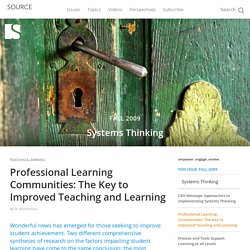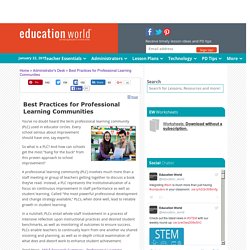

Battling Fake News in the Classroom. In this post-election period, there has been a lot of discussion about fake news, particularly about how it is spread and shared online, and whether it influenced the recent presidential election. On November 22, Stanford University released an influential study showing that middle and high school students—and even some in college—have trouble distinguishing which online resources are credible. The inescapable fact is that young people need to be prepared for the Wild West of information that they live in and will grow up in. It is also imperative that we, as educators, prepare young people for the important job of responsible and informed citizenship. Media Literacy and “Crap Detection” Teaching media literacy is not new, but with the explosion of social media and the lightning speeds at which information is shared, critical evaluation skills have never been more important.
The Role of Educators So how can educators address this emerging crisis in digital literacy? What’s Next? How PLC's support Students. Robert John Meehan. Solution Tree: Rebecca DuFour, 3 Big Ideas of a PLC. Professional Learning Communities Still Work (If Done Right) Implementing effective professional learning communities. Professional Learning Communities: The Key to Improved Teaching and Learning. Wonderful news has emerged for those seeking to improve student achievement.

Two different comprehensive syntheses of research on the factors impacting student learning have come to the same conclusion: the most important variable in the achievement of students is the quality of instruction they receive on a daily basis (Marzano, 2003; Hattie, 2009). To ensure students learn at higher levels, simply improve teaching. The question remains, “How?” The challenge is particularly daunting in the traditional K-12 culture which regards each school as a series of independent kingdoms (classrooms) staffed by relatively autonomous subcontractors (teachers) who are responsible only for what happens inside their individual classrooms.
In this culture of isolation, the individual teacher becomes the focus of improvement. School districts typically create elaborate teacher supervision plans in the hope that superiors can evaluate subordinates into better performance. Systems Thinking Conclusion. Best Practices for Professional Learning Communities. You’ve no doubt heard the term professional learning community (PLC) used in educator circles.

Every school serious about improvement should have one, say experts. So what is a PLC? And how can schools get the most “bang for the buck” from this proven approach to school improvement? A professional learning community (PLC) involves much more than a staff meeting or group of teachers getting together to discuss a book they’ve read. Instead, a PLC represents the institutionalization of a focus on continuous improvement in staff performance as well as student learning. In a nutshell, PLCs entail whole-staff involvement in a process of intensive reflection upon instructional practices and desired student benchmarks, as well as monitoring of outcomes to ensure success.
Read More: AMLE Research Summary - Professional Learning Communities (2012). Read More: Professional Learning Communities (2009). How does this process of intensive reflection and job-embedded learning unfold? 1. Educational Leadership:Schools as Learning Communities:What Is a Professional Learning Community? Are you using your school's PLC to its fullest eSchool News.